The New Genderation
Eastside set out to find students of all different types of sexualities and genders to share their stories of growing up, coming out to family and friends, positive and negative encounters throughout their lives, misconceptions and future plans. Ultimately, students at East should be able to grasp the understanding of the daily struggles their peers go through and take action to help them live their lives without facing discrimination.
March 1, 2016
No one is new to the idea of LGBTQ+-centered journalism. We’ve all seen the words thrown about the media outlets: gay, lesbian, transgender. But although these terms might be used more frequently in the modern lexicon, it’s not uncommon for people not to know what they mean. Along with our coverage of the transgender community at East, Eastside worked to provide a list educating people on the various terms used to describe different gender identities and sexualities. Although none of these definitions are set in stone, every single identity/sexuality listed here is legitimate — a real label that real people use to describe themselves.
Both gay and lesbian are used to describe homosexuality. The word “lesbian” strictly refers to homosexual women. Although homosexual men are more often described as gay than women, the label can apply to both.
The definition of the word “transgender” and what it means to be trans has been hotly debated both within and out of the transgender community. In its most simple terms, to be transgender is to identify as a gender different from the one you were assigned at birth. It’s when you get into specifics, though, that things begin getting complicated. Does one need to feel gender dysphoria, or distress and discomfort with one’s physical sex, in order to be trans? Does one need to actively want treatments like hormone therapy or sex reassignment surgery? It’s hard to be sure, especially since being transgender, at a personal level, means something different to each transgender person. The experience of one transgender person cannot define them all.
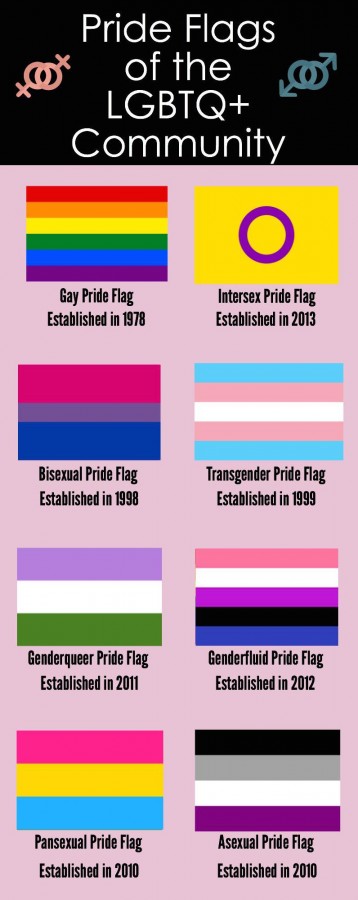
“Transgender” is generally considered an umbrella term encompassing a variety of more-specific gender identities. Some people identify as genderfluid, meaning that their gender varies over time. To be genderfluid is to have one’s gender identity move across the gender spectrum; on a given day, a genderfluid person may identify as male, female, a combination of the two, or neither. Others can identify as genderqueer, a word that simply describes a gender identity outside of the conventional male/female binary. Those who are gender-nonconforming choose to express their gender identities in a way that defies conventional societal expectations.
The “A”, sometimes included in iterations of the LGBTQ+ acronym, does not stand for “Ally,” but rather for asexuality, a legitimate sexuality which is too-often dismissed by the general public. Asexual people have a low or nonexistent interest in sexual activity.
One of the biggest misunderstandings about pansexuality is the idea that it’s identical to bisexuality. In reality, while the two can be similar, they are not the same. Bisexuality is generally defined as sexual attraction to both males and females; in comparison, pansexuality describes attraction to people of all genders, including people that identify as male, female, genderqueer or genderless (agender). Although pansexuality is generally used to describe attraction to a wider variety of genders, both communities do not base themselves solely on gender identity. In fact, some bisexual people choose to define bisexuality as sexual attraction to more than one gender, creating a more “open” definition. Neither community focuses on strict gender options, so people label themselves as bisexual or pansexual to suit their comfortability and sexual fluidity. When asked about their sexuality, some pansexual people will say that they’re bisexual because pansexuality technically includes bisexuality and bisexuality itself is more recognized by the general public.
The LGBTQ+ community branches out into a plethora of different sexualities and genders that are often overlooked by the media and public. In order to avoid the erasure of all of the sexualities and genders that are uncommonly seen in society today, people must gain a better understanding of all of the genders and sexualities and comprehend the key differences between each and every one of them. It is essential that these unrecognized identities are proven as an integral part in today’s society, as opposed to being made-up or simply “phases.”
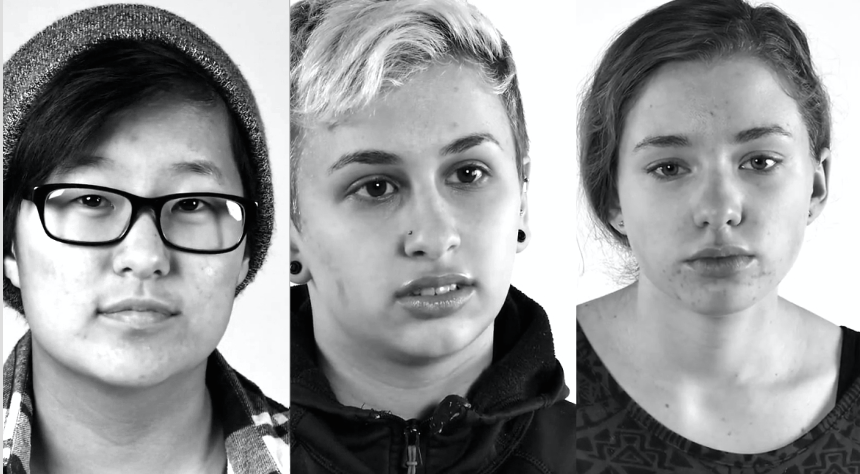
Not a Freak
At the bright, young age of 11, Alexander Rudin (‘19) began searching the great-wide-web. But unlike the typical preteen adolescent, Rudin was not simply searching the internet with mindless intentions; no, instead, he was focused on a search for identity; his identity. The internet, though for some so remote and disconnected, was actually the entity which first provided Rudin with a sense of belonging. Through scrounging through pages upon pages of medical websites, Rudin was able to find a “category”, which, for the first time, he perfectly fit into.
From that moment of discovery, Rudin knew exactly who he was supposed to be. Yet, despite his inner assurance, a difficulty still persisted— coming out to both his parents and his friends.
“Coming out to my Mom was significantly… difficult because she wanted a girl and a boy… but she is growing to understand that this is who I am and learning to become accepting of it,” said Rudin. “I came out to my father in the car and I said ‘Hey Dad, I’m trans’ and he said ‘Hey, where do you want to go for lunch?’ and that was that.”
Despite his Father’s positive response, Rudin’s struggle with coming out was still greatly intensified, due to his diagnosed anxiety disorder. Avoiding coming out face-to-face to his acquaintances, Rudin instead made a Facebook post. Still, even the idea of just the social media post made Rudin apprehensive.
“I wrote out [the Facebook post] a bunch of times, and then I would delete it… then finally I had a version I was satisfied with and one of my friends had to hit post for me,” said Rudin.
Though coming out was a generally quick process for Rudin, picking a name that truly fit was not such a simple task.
“I went through so many names. At first I asked my friends to call me Ari, but that had already been a nickname that they had called me before, so I couldn’t get into the mindset that it was a guy’s name,” said Rudin. “And then for a little while I asked them to call me Benjamin…and that lasted like two days and then Sam lasted about an hour; Asher lasted for about two months.”
But when Rudin’s friend finally called him Alex, something simply “felt right.”
“It felt like they were saying my name,” said Rudin, “they were calling me by what I should be called by.”
Sadly, transitioning is often misconceived as one’s personal choice. But this won’t stop Rudin from dispelling this notion and continually imploring the comprehension of what it truly means to be transgender.
“I feel like people think that I’m choosing this for myself, which I think is mainly because they are not educated about gender dysphoria and about being transgender,” said Rudin. “They don’t understand that it’s not a conscious decision. I didn’t just wake up one day and decide that I want to go through all of these terrible things just for the hell of it… I’m going through this because this is me.”
Though Rudin is indeed able to freely express himself for who he is at East, he still feels that more can be done to change the way he is treated by other students.
“There are times where I’ve been called an “it,”… a tranny or a dyke or other derogatory terms” said Rudin, “most of these instances happened in school,” said Rudin. “I feel like East does have rules, and it attempts to enforce those rules, but they’re often not enforced well enough or just aren’t taken seriously enough by the students.”
Not only does Rudin feel that East students can improve their behavior, but he further feels that teachers must have a more profound impact on LGBTQ+ issues, rather than just acting as bystanders.
“One of my big concerns is that teachers see people hear or do things and they just stand there,” said Rudin. “Like, I was in the hallway and this girl was talking about me and she said ‘oh my god, the tranny dyke is looking at me!’ and there were teachers there and nobody said anything.”
Because of this lack of teacher support, Rudin did not feel comfortable enough to assert all of his rights as a student.
“Last year there was this group of kids who would shove me and I did not know that counted as harassment or bullying; I didn’t know that I could talk to somebody about that, so I didn’t,” said Rudin.
If his teachers do not stand up for him against bullies, how can he be expected to trust and confide in them?
In the future, Rudin remains optimistic hoping to start ‘T’ or Testosterone at age 16 and, after that, receive both top and bottom surgery once gaining legal consent at the age of 18.
Above all, Rudin is grateful for the community of LGBTQ+ students that East has offered him. Through the GSA, Rudin has been able to bond with several other transgender students, an opportunity he had not been afforded in his younger years.
“Knowing other people who are trans or just generally LGBT has helped me not feel alone,” said Rudin. “Yes, I have gender dysphoria… but that doesn’t make me a freak.”
Pansexuality: I Live It Every Day
If you haven’t seen Katie Aylesworth (‘16), then you’ve probably never been to an East theatre production. In this year alone, she’s played major roles in The Tempest (Ariel) and Beauty and the Beast (Belle), demonstrating her talents in both acting and singing.
She’s also pansexual, but that’s a different story entirely.
Aylesworth first identified as openly pansexual in the fall of 2013. She had briefly identified as bisexual, even coming out to her parents as bi, before deciding that the label just didn’t fit her.
Although bisexuality and pansexuality are often seen as having similar definitions, they’re generally accepted in the LGBTQ+ community as being two different entities entirely. Most people think of bisexuality as attraction to only two genders, male and female; despite this, the bisexual community currently leans toward the looser definition of: “attraction to more than one gender”. Similarly, pansexuality also encompasses attraction to more than one gender, yet, nonetheless, people who identify as pansexual—people like Aylesworth—see the label as having different connotations. For Aylesworth, pansexuality has less of a focus on more physical characteristics like gender and appearance.
“I’m attracted to personalities,” said Aylesworth. “I don’t care what you look like… the reason I’m pansexual is because I get attracted to your personality before anything else.”
Passionate, Aylesworth firmly insists on the existence of pansexuality.
“I hate it when people say [Pansexuality is] not a real sexuality. It is real, trust me. I live it every day,” said Aylesworth.
Luckily for Aylesworth, she has yet to encounter any prejudice against her sexual orientation, having “never had any animosity from [her] friends” over it.
Aylesworth largely attributes this lack of judgment to the social atmosphere of the Cherry Hill community.
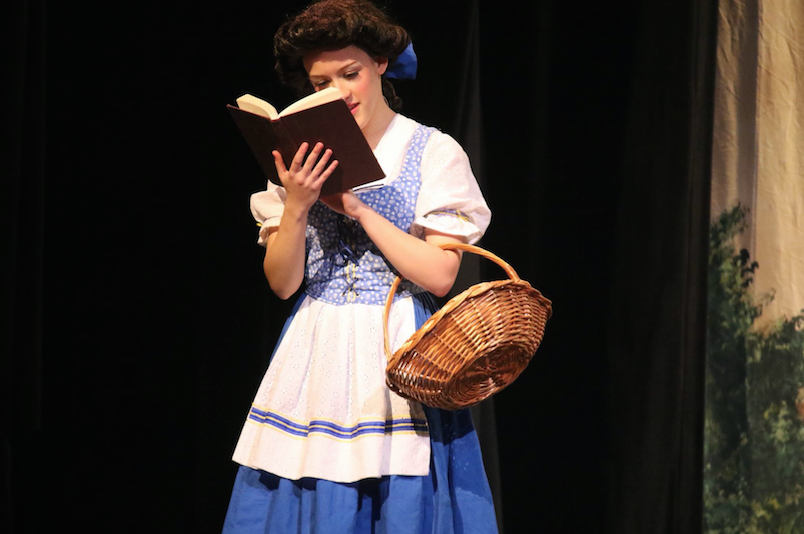
“Cherry Hill is kind of like a safe spot,” said Aylesworth, “even though there are people who kind of don’t accept other sexualities… it’s mostly very liberal, and I feel very welcomed here.”
In the future, Aylesworth not only hopes to further her musical theatre career but also to minor in gender and sexuality studies.
“I want to get more education, because I think that’ll provide more acceptance,” said Aylesworth.
Comfortable in My Own Body
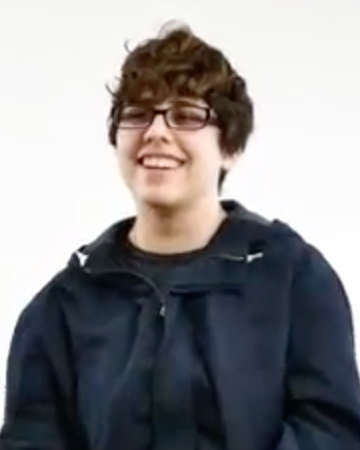
While growing up in Cherry Hill, Milo Cancello (‘17) would do activities like soccer, martial arts and bike ride and would occasionally horseback ride in Mexico. When Cancello was in elementary school, all his friends were guys.
“I didn’t really realize there were any differences between me and the guys,” said Cancello.
Friends of Cancello’s parents would say things such as, “She’s just like a boy,” while Cancello would say, “I’m more of a guy than a girl.” Before his transition, he referred to himself as a tomboy.
Once Cancello got to grade 9, he came out to his friends, schoolmates and family as a transgender male. All his friends and a lot of classmates were accepting of his transition, but classmates were also confused. At home, Cancello never came out to his brother due to his homophobia and transphobia; however, when he came out to his parents, they cried.
“[My parents] were like, ‘Oh, we’ll accept you no matter what,’” said Cancello. “But two weeks later they were really negative about it.”
His parents were puzzled by Cancello’s transformation and thought this was all a phase.
“My mom thinks that since she’s a tomboy, she’s also trans…” said Cancello. “She thinks that I’m just going through a phase that I’m a tomboy.”
A lot of us are comfortable in our bodies. If we identify as a man, then we’re in a man’s body.
— Milo Cancello
At school, Cancello never experienced any type of harassment yet he struggles with comfortability. He gets changed in the nurse’s bathroom for gym and takes advantage of the all-gender bathroom installed in B-wing.
“I don’t like using the guys bathroom because there are still people here who think I’m a girl,” said Cancello.
Along with being transgender, Cancello is asexual. He realized that he was asexual before realizing he was transgender. His sexuality was never an issue for him.
As being a transgender person, there are a lot of misconceptions people have. One of the biggest misconceptions is being told that you are a girl trapped inside of a man’s body or a man trapped inside of a girl’s body.
In order to eliminate these misconceptions, Cancello thinks that there should be a gender studies class at East that will educate students on all the different genders and sexualities. Cancello also thinks that teachers should be more educated on the topic as well.
If people at East are taught about genders and sexualities, students would be more sincere to the struggles transgender students face everyday.
Luke’s Care Packages
A couple of months ago, I started a small organization called Luke’s Care Packages after finding an abundant amount of feminine clothes that I’d never wear again. Luke’s Care Packages is an organization that I created in order to benefit other transgender individuals around the country. I receive donations – whether it be clothing, accessories, or money – and use it to send out Care Packages. The packages vary based on need. For someone, it could be filled with makeup and dresses, whereas for someone else, it could be filled with more masculine clothing, packers and binders. Monetary donations are used to pay for shipping or anything inside the packages that can’t be donated, such as binders and packers.
Through friends and various social media platforms, I was able to spread the word about Luke’s Care Packages. Soon, people were beginning to find me, located anywhere from Pennsylvania to California. Recently, I sent out my 500th package.
Two years ago, when I wanted to come out as transgender but couldn’t, I would’ve wanted more than anything to be able to have masculine clothing, a binder, or a packer. A year ago, when I finally came out, I was ecstatic when I got my first binder. Each and every day living as me has made me happier. The thought of being able to do that for people makes everything worth it to me.
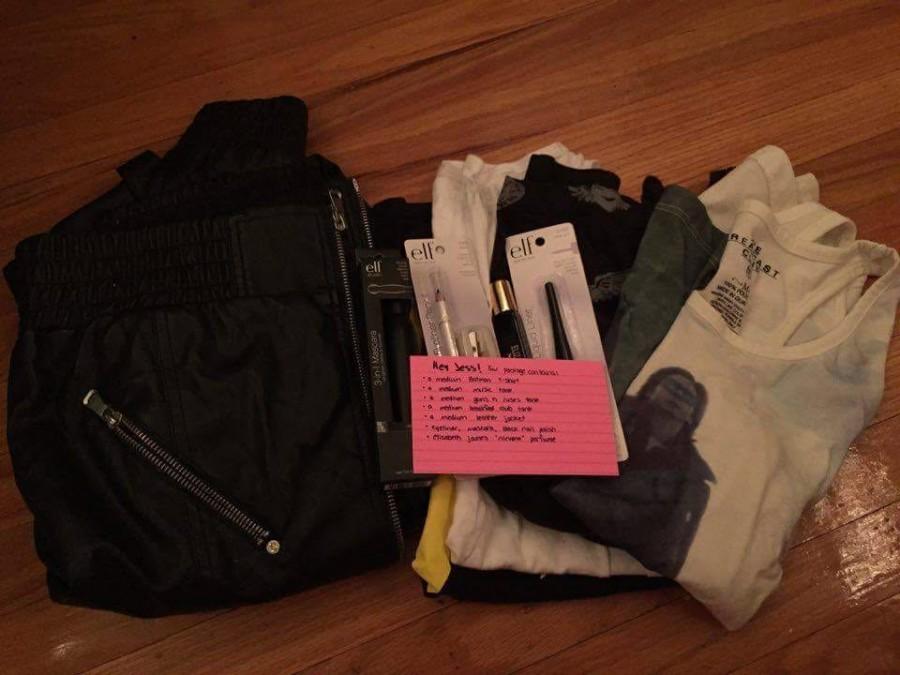
The fact that five hundred packages have gone out all over the country in such a short amount of time completely blows my mind. I never expected it to get this far or be this successful. However, a majority of these packages rely on donations just because of shipping. The last fifty or so packages have had to come out of hundreds of dollars from my pocket money. I hope to have donations coming in soon so that I can continue to send more packages out.
I get messages every day or every other day from people all around the United States asking for packages. Having this blow up so much is astonishing to me. I hope that soon, I won’t be limited to only the United States.
Q&A with Blake Weiss
Blake Weiss shares with members of Eastside his story about being openly transgender.
Q: How long have you identified yourself as transgender?
A: I’ve been living full-time as a male for two years… I’ve never been one to be quiet about myself. If I’m not out as transgender, I’ll be unhappy… But, I’m really happy now being out as transgender.
Q: Do you feel accepted at East?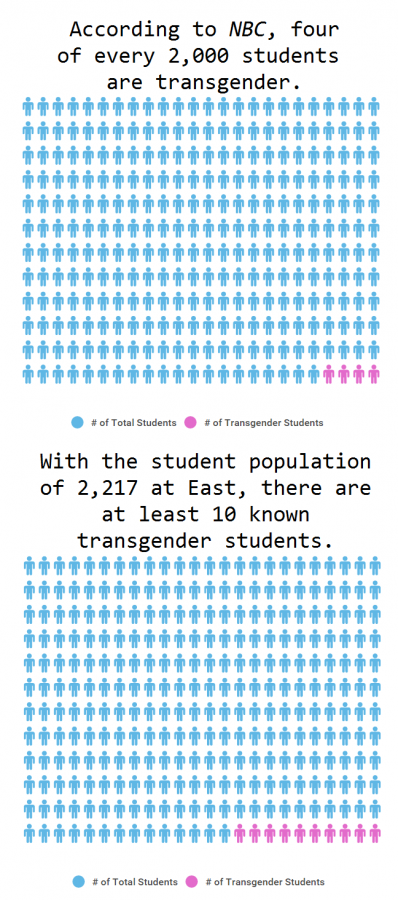
A: I feel like I’m pretty accepted… People just don’t understand because they don’t know anything about [being transgender].
Q: How do you feel about the gender-neutral bathrooms at East?
A: It’s really good. It’s really nice to have [the gender-neutral bathroom] because I’m really uncomfortable in the girls’ bathroom and I don’t pass well enough to go into the men’s bathroom.
Q: Have your teachers been receptive of you and the pronouns that you identify with?
A: Before the start of the year, my mom emailed all my teachers and said, “My kid’s transgender. He uses he or they pronouns… I have had a teacher before in the past, so she’s kind of a little bit confused because she knew me before I transitioned, so I understand her messing up. But most of my teachers when they do mess up, they get really upset about it, and they apologize.
Q: How did your friend react when you came out?
A: It was really rough because he had been my really close friend, one of my best friends, and then he kind of alienated me and made me feel like I wasn’t normal or like I didn’t deserve his friendship.
Accepted by the People I Care About
When Jill Murphy (‘16) was just 10 years old, she realized she was bisexual and thought that it was normal to everyone to like boys and girls, not just the opposite sex. While growing up, Murphy decided to push her sexuality to the side since it wouldn’t be too important until high school and would spend her time reading or playing outside. Once she was at East, she rediscovered her sexuality and became vocal about it her junior year.
Coming out for Murphy was an easy process. She first came out to her friends and parents and all their reactions were positive. She is, however, not coming out to her other family members.
“I haven’t told extended family because I don’t know how they’ll react,” Murphy said.
In July 2015, Murphy and her best friend came out as bisexual to Murphy’s parents together. Her best friend is not out to her parents yet, but she wanted Murphy to be openly bisexual at home.
“I couldn’t [come out] myself,” her friend said. “I knew her parents are very accepting and I know how it feels to stay in.”
Together, Murphy and her friend got together to think of a creative way to help Murphy come out to her parents.
“I wasn’t really ready [to come out], but [we] decided that we were going to bake cupcakes with the bi colors on them and write, ‘We’re bi,’ and say, ‘You are what you eat,’ and take a bite of the cupcake,” Murphy said. “They were like, ‘Okay, cool.’”
I’m accepted by the people that I care about and that’s all that matters.
— Jill Murphy
After coming out to her closest friends and family members, Murphy didn’t care about what other people thought about her and whether they would accept her or not. In fact, she thinks that a lot of students at East and clubs like the Gay-Straight Alliance are very welcoming.
Murphy said, “I’m accepted by the people that I care about and that’s all that matters.”
Apples v. Oranges: Sexuality v. Gender
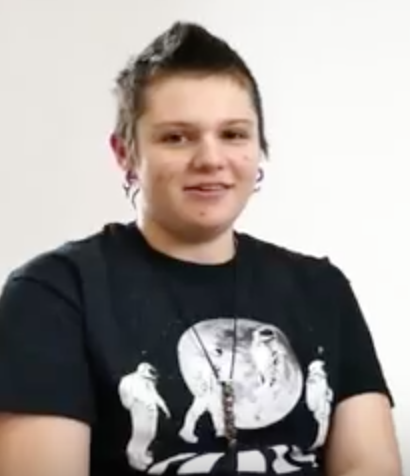
Never embarrassed to be anything other than his complete and total self, Chris Doner (‘18) is always sure to adamantly portray his opinions with no regrets.
“I’m both bisexual and transgender, actually,” said Doner. “If I was a girl, I’d probably still be bisexual.”
For Doner, coming out was quite an intricate and diverse process. On one front his mom was relatively fine with him coming out.
“It took her a while to get used to it, but she’s very respectful,” he said.
On the contrary, Doner’s father is not as accepting, actually “close-minded” in comparison to Doner’s mother.
“No one actually uses my pronouns or my name. Typically I’m addressed by my birth name and no one likes to bring the topic to light,” said Doner.
In terms of social media, when Doner came out he merely “changed [his] name,” and on some sites “[his] bio.”
As aforementioned Doner is an all-around passionate being; in terms of rights for the LGBTQ+ Community, Doner’s enthusiasm undoubtedly shines through.
Foremost, Doner feels that in order for the rights of the LGBTQ+ Community to be fully recognized, all members of society must become properly “educated.”
“Many people, without any ill-intent, are uneducated,” said Doner.
One of the first steps to this education is understanding the importance difference between sexuality and gender identity.
“Being trans has nothing to do with being bisexual or vice versa,” said Doner. “My gender isn’t my sexuality. It’s like apples and oranges.”
Doner further pointed out that those who remain uneducated only leads to blatant inaccuracies that are actually rather embarrassing. For instance, some may have accidentally misused the word “transgender,” instead saying “transgendered.” According to Doner, using the latter word is quite idiotic.
“Transgendered is just simply grammatically incorrect. It’s like saying the shirt was ‘greened’ instead of saying it’s a green shirt,” he said.
As a final proposal to ensure that all East students truly become educated on LGBTQ+ issues, Doner hopes to adapt East’s curriculum towards a progressivist outlook.
“I think I can speak for many of my transgender peers when I say that I would love gender and sexuality to be taught to us in sex education,” said Doner.
Doner, in his becoming strong-willed demeanor, feels no pressure to act more ‘masculine’ simply because he is transitioning.
“I really look very feminine. Which is fine; men can be feminine. I think that hasn’t sunk in yet for the people of this generation living in the past. Hopefully, with the new bathroom, people will be inspired to be more progressive towards the trans community,” said Doner.
After many year of agnosticism, Doner has converted to Judaism.
“I do know that God would see us all as equal children and probably wouldn’t want to divide us because of what’s between our legs,” said Doner.
In the future Doner hopes to continue his transition, with plans of getting both “top surgery” and “hormone therapy.”
Doner is not as concerned with bottom surgery.
“That’s only because people never look at ‘what’s down below’ and immediately assume your gender,” said Doner.
Doner feels that being transgender does not define him. While he is proud to be transgender, he views his gender as just another facet of himself. The most important aspect of Chris’s life? His avid love for drawing and reading, of course!
Thank you for reading The New Genderation
Acceptance, inclusion and understanding are becoming increasingly crucial in today’s society. With the Supreme Court’s recent legalization of same-sex marriage, awareness for the LGBTQ+ community has come to a forefront. It is time to bring the discussion to East.
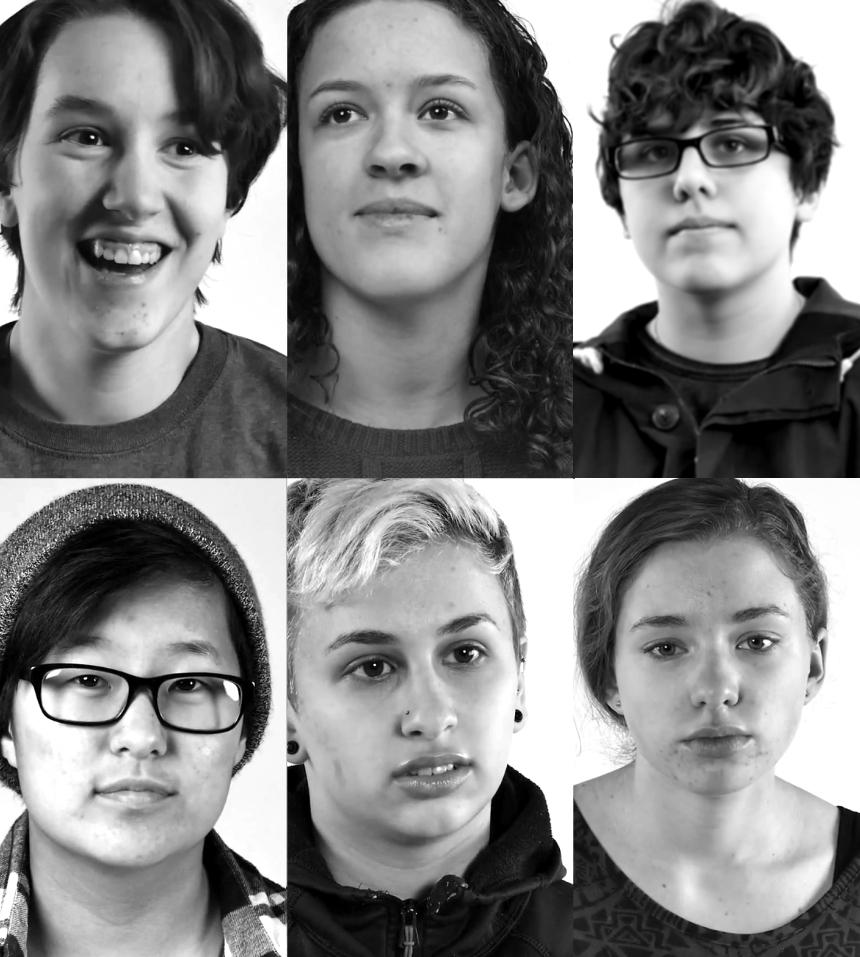
Alexis Arnold • Mar 7, 2016 at 9:55 am
Thank you so much for putting this article together! It is well-organized, aesthetically pleasing, and a very informative read. You folks did a wonderful job! As the leader of the Collingswood High School GSA, I want you to know that this article is impacting other schools as well as other members of the LGBT+ community. Keep up the good work, you are as a city upon a hill my friends 🙂
Julie Bathke • Mar 5, 2016 at 1:03 pm
I continue to be amazed and proud of the Eastside staff and Greg Gaglardi. You have the courage it takes to be journalists. Not many school publications are willing to address difficult issues for fear of censorship or disapproval. Speaking up and speaking out are the only way to serve the community. Well done all around.